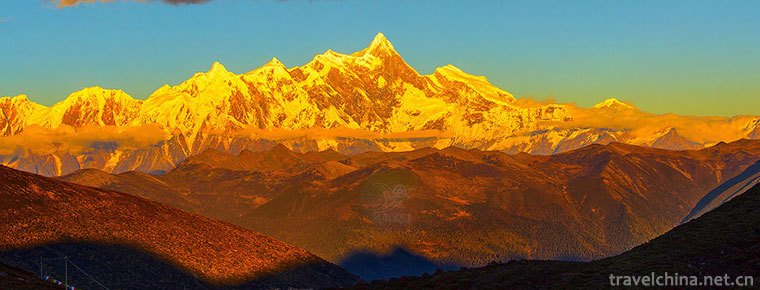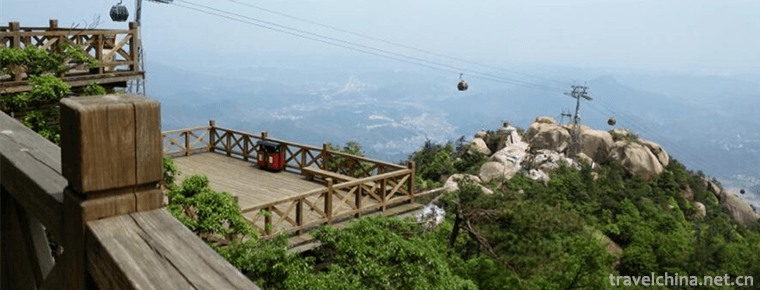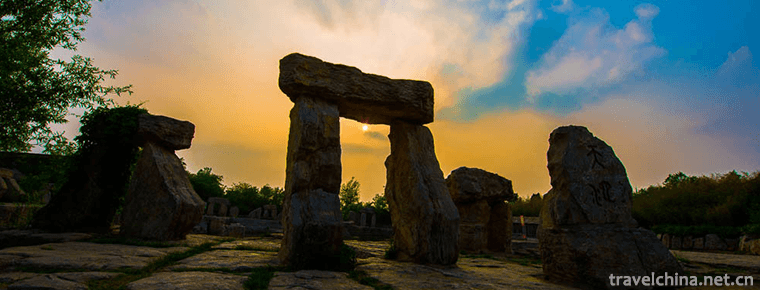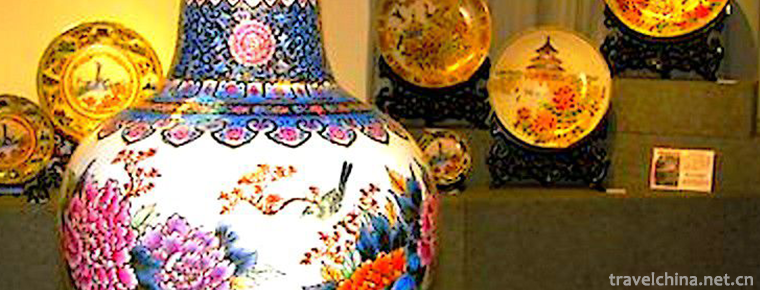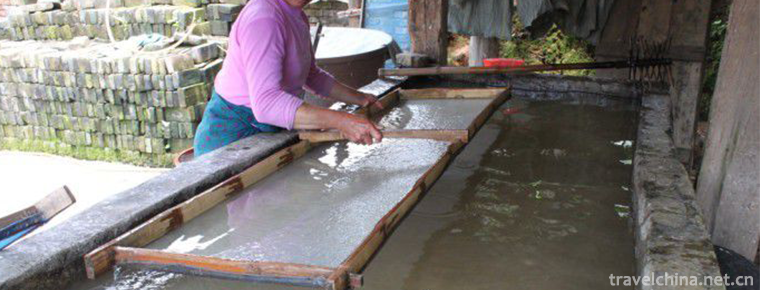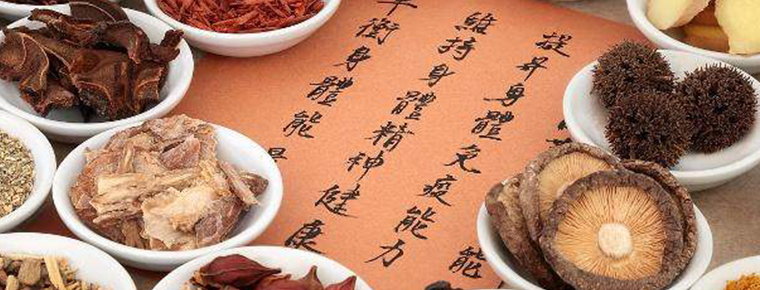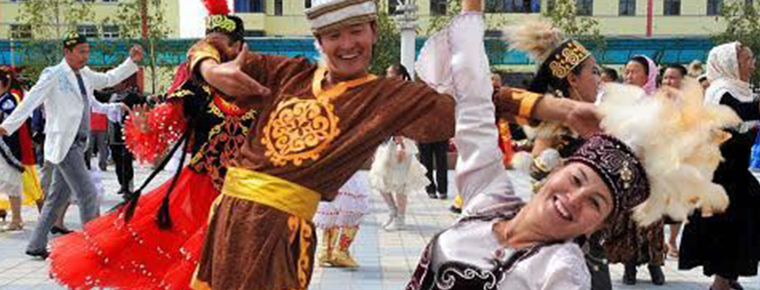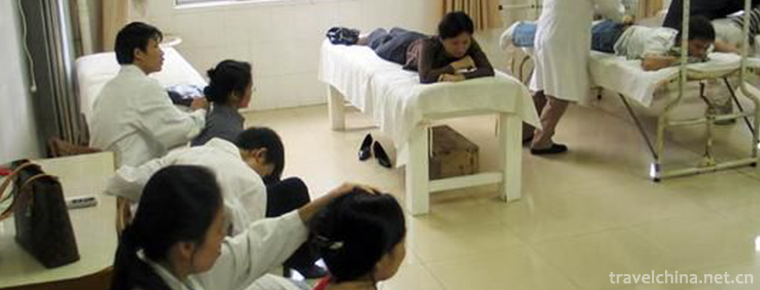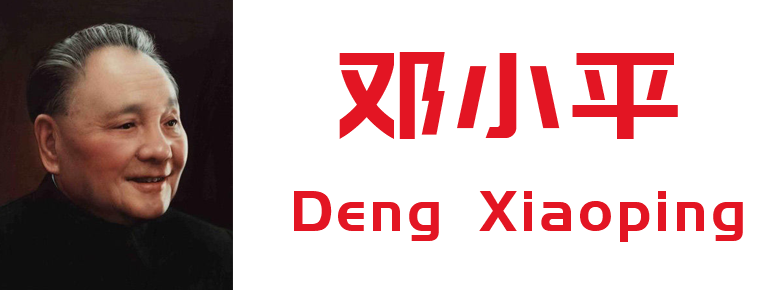The ancient city of Qingzhou
Qingzhou ancient city is one of the ancient nine states. It has a history of more than 7,000 years, a history of civilization of more than 5,000 years, and a splendid capital of 12 years. It has six ancient city pools, including Guangxian City, Guanggu City, Nanyang City, Dongyang City, Dongguanweizi City and Qicheng City.
On November 18, 2013, Qingzhou was named "National Historic and Cultural City" by the State Council. On February 16, 2017, the State Tourism Administration publicized 20 new 5A scenic spots to the public, and Weifang Qingzhou Ancient City scenic spots were selected as 5A scenic spots.
On February 25, 2017, Weifang Qingzhou Ancient City was newly promoted as a national 5A tourist attraction.
Qingzhou is a famous historical and cultural city with profound human resources and distinct regional cultural characteristics. According to the investigation of unearthed cultural relics, as early as 7,000 years ago, human beings had multiplied and lived here, and it was the birthplace of "Dongyi Culture". There are more than 270 sites of Beixin culture, Longshan culture and Dawenkou culture. Dayu River Regulation is planned in Jiuzhou, Qingzhou is one of the nine states. Qingzhou is recognized as one of the oldest geographic works in China, Shangshu Yugong. It is recorded in Jiuzhou - Ji, Yan, Qing, Xu, Yang, Jing, Henan, Liang and Yongzhou. It is called Qingzhou "according to the Bohai Sea in the northeast, Dai (Taishan) in the southwest and Qingzhou in the Haidai only". According to Zhou Li, "Zhengdong is called Qingzhou". And the commentary said: "Because the native dwelling in Shaoyang, its color is green, so it is called Qingzhou". "Lushi Spring and Autumn" calls Qingzhou the "Oriental State". In the five thousand years of history of China, Qingzhou has been a famous city and has an important influence throughout the country. As the political, economic, military and cultural center in Shandong, Qingzhou has lasted for more than 1400 years. In the five years of Yuanfeng in the Western Han Dynasty, Qingzhou Acupuncture History Department was established. It is one of the 13 Acupuncture History Departments in the whole country. Guangxian Town (1 mile west of the present city) is the governing body, and it has jurisdiction over 100 counties in 5 counties, 4 countries and more. In the Wei, Jin, and Southern and Northern Dynasties, Qingzhou Prick History Department was still established, covering 47 counties and 9 counties. During 399-410 A.D., as the capital of Nanyan, Murongde became the only emperor in Shandong Province. Qingzhou Prefecture in Sui Dynasty has jurisdiction over 4 counties and 36 counties. In Tang Dynasty, Qingzhou Governor's Office and Dudu Governor's Office were established successively, covering 49 counties in 8 states, and Qingjie Town in Luzi in the middle Tang and Five Dynasties, covering 15 states. In the early Northern Song Dynasty, Jingdong Road was set up, covering 26 prefectures, prefectures, Jun and 89 counties. In the seventh year of Xining, Jingdong Road was set up, covering 36 counties in seven prefectures and seven prefectures. Jinshi Shandong East Road, under the jurisdiction of 2 prefectures, 11 prefectures, 53 counties and 83 towns. At the beginning of the Yuan Dynasty, Yidu Xing Province was established, followed by the Xuanxiu Department of East-West Road in Shandong Province, which administered 44 counties and 12 prefectures along 3 roads. In the early Ming Dynasty, Shandong Province of Xingzhongshu was established, with jurisdiction over 89 counties in 15 prefectures and 6 prefectures. In the ninth year of Hongwu (A.D. 1376), Licheng was transferred. Since then, the late Ming Dynasty and the Qing Dynasty have been the prefecture of Qingzhou. The ancient city of Qingzhou has also been changing with the change of history. Guangxian Town in Han Dynasty is located to the west of the waterfall. Guanggu City was built in 311 A.D. (five years of Jin Yongjia). After six major battles, it was leveled in 410. After the extermination of Nanyan in the Eastern Jin Dynasty, Dongyang City was built (from the west to the present Navy 402 Hospital, from the south to Nanyang River, from the east to Chengguan Hospital and from the north to Yao Wang Shan Road). The Xiaoming Emperor of the Northern Wei Dynasty built Nanyang City, which was 3 feet 5 feet high, 3 feet 5 feet Hao and 13 miles Zhou. Its scale was 3 feet long and 1 mile longer than Jinan.
Qingzhou is situated in a key transportation area and has an advantageous geographical position. "On the right there are mountains and rivers, on the left there are negative sea Rao." Dongzhuo Peninsula, Yimeng in the south, Bohai Sea in the north, is an important military town in past dynasties. In the Northern and Southern Dynasties and the early Tang Dynasty, political officials considered both military affairs and Qingzhou was the envoy of Pinglu Festival in the Tang and Five Dynasties. In the Song and Jin Dynasties, the navy was set up here, in the Northern Song Dynasty, the Eastern and Eastern Beijing Road comforting envoy was set up here, in the Jin Dynasty, the Eastern and Western Shandong Road commanding envoy was set up, in the Yuan Dynasty, the Yidu Shuai Fu and the Marshal Fu were set up, in the Ming Dynasty, the Shandong Duwei and the Capital Commanding Envoy were set up, and the Shandong Tidu From March 1948 to April 1949, the East China Bureau was stationed in Qingzhou. Because of the prominent position of Qingzhou, there were more emperors in Qingzhou in history. The Han Dynasty feuded Europe as Guanghou Biography V, Liu as Guanghou Biography III, Yuan as Zhongjing King, Yiwang, Ming Dynasty as Qi King, Han King and Heng King.
Because of its political, economic and cultural background, Qingzhou, as a Buddhist center in Qilu, has a history of more than 1700 years, and is one of the earliest areas where Buddhism was introduced into Han. There are many Buddhist sects, such as Pure Land Sect, Zen Sect and Tantra Sect, and a lot of precious relics have been left. In particular, the discovery and restoration of many Buddhist relics, as well as the successive publication of a large number of Buddhist research papers and monographs, have constructed a higher level of connotation for the Buddhist culture of Qingzhou.
Qingzhou is one of the ancient nine states. It has a history of 12 national capitals, 1065 provincial capitals, 1606 prefectures and 2216 County governments. Since the early Western Han Dynasty, there have been six ancient cities, namely Guangxian City, Guanggu City, Dongyang City, Nanyang City, Dongguanweizi City and Manchu Banner City in the Han Dynasty.
Orion of the Name
Qingzhou, one of the "Jiuzhou" in Yugong in ancient times, generally refers to an area east of Mount Tai to the Bohai Sea. In ancient times, Qingzhou was the land of Dongyi. It is said that after Dayu harnessed water, the whole country was divided into Qing, Xu, Yang, Jing, Henan, Hebei, Yan, Yong and Liangjiuzhou according to the trend of mountains and rivers. Qingzhou is one of them. The oldest geographical work in China, Shangshu `Yugong', is called Haidai Qingzhou. The sea is the Bohai Sea and Dai is Mount Tai. According to Zhou Li, "Zhengdong is called Qingzhou", and the commentary says, "The earth is built in Shaoyang, and its color is green, so it is called Qingzhou."
geographical position
Qingzhou City is adjacent to Changle County in the east, Zichuan and Linzi districts in Zibo City in the west, Quanqu in the south, Guangrao in Dongying City in the north, and Shouguang City in the northeast, with a total area of 1563.8 square kilometers, spanning 118 10 118 46 in the East and 36 24 to 36 56 in Jiaoji Railway and Yanglin Railway, Jiqing Highway and Changshen Highway intersect in Qingzhou and pass through 309 National Highway and 352 Provincial Highway. They are listed as the sub-central cities of Shandong Peninsula Urban Agglomeration. In addition, the upcoming Jinan-Qinghai high-speed railway will set up Qingzhou North Railway Station in Qingzhou.
Scenic Area
The scope of cultural tourism in Qingzhou ancient city covers about 10 square kilometers, which roughly includes three parts: Beiguan ancient block and Songcheng ancient Dongyang city; Nanyang River sightseeing belt, Gongyuan historical and cultural block, Nanmen block and Zhaode ancient block of Dongguanzhizheng city in ancient Nanyang city area.
Urban structure
There are hundreds of ancient streets and alleys in the city, including Zhaodegu Street, which has been selected as "the top ten famous historical and cultural streets in the country", as well as the streets and alleys of Gongyuan Street, Weijie Street, Dongmen Street, Beimen Street and Shengjiangfu Street. The names of most streets and alleys have lasted for hundreds of years or even thousands of years. These streets and lanes have clear texture, complete spatial layout, and relatively intact traditional style of the ancient city. Among them, Beimen Street, Idol Garden Street and Dongmen Street are the most complete, largest and richest-connotation streets. Tourists walking among them will appreciate the brilliance of the ancient city of Qingzhou and feel the profound historical and cultural atmosphere. Interest. Many poems, no matter Wang Xinjian's "Tour Yunmen Mountain": "Visit Yunmen Mountain leisurely, walk on turtle scales leisurely. Walking is green, waving is white clouds. Don't disturb Chen Yuanmeng, just hear Fan Gongyin. The moon shines in Qingzhou, and the fairyland turns into a vulgar place." Or Zhao Juzhen's "Yunmen Mountain Dragon Poetry", which depicts the beautiful scenery of Qingzhou, is exciting.
Main attractions
Beimen Street, Dongmen Street, Gongyuan Street, Beiying Street, Nanying Street, Zhaode Street and other ancient streets of the Ming and Qing Dynasties are more than 10,000 meters. There are Qingzhou Museum, Sanxian Temple, Li Qingzhao Memorial Hall, Wannianqiao, Songcheng, Gongyuan, Hengwang Palace Archives, Qingzhou Palace, Fuyamen, Fuwen Temple, True Religion Temple, Mosque, Christian Church, God of Heaven. Church, Peizhen Academy, Nanmen, Kuixing Tower, Ouyang Xiushanzhai, Blue Valley, Li Qing's former residence and more than 120 scenic spots, as well as hundreds of old brands, fully demonstrate the traditional market customs and social customs of ancient Qingzhou.
Fu Cai men
Fucaimen, also known as Nanmen, is the South Gate of Nanyang City, Qingzhou.
Nanyang Ancient City of Qingzhou was built in the Northern Wei Dynasty, and the government offices were located in the Jin, Yuan, Ming and Qing Dynasties. The brick city was built in Hongwu three years ago. The wall is 12 meters high, 6 meters thick and 108 steps long. There are 1777 battlements. There are four gates: Haiyan, Daizhong, Fucai and Zhanchen. All kinds of government offices, temples, academies and former residences of famous people are all over the city, which is the real "first capital city of Shandong".
Kuixing Building
The Kuixing Tower was built in the Song Dynasty and rebuilt in the Ming and Qing Dynasties. It is a two-storey building with great grandeur. In the ancient "Ten Sceneries of Qingzhou", there was a scene of "Night Rain in the South Building", that is, the scene of this building. Ancient scholars prayed for a place in the imperial examinations. Quixing Tower is one of the landmark buildings in Qingzhou ancient city with its beautiful shape and solemn dignity.
Celebrity archway
There are more than ten celebrity workshops in Qianyuan Street and Nanmen Street, such as Zhuguofang, Shi Maohua's Shishulifang, a Kodifang and Prince Feng Qi's Shaobaofang. In addition, there is the landmark archway of the ancient city of Qingzhou, Haidai Metropolitan Square.
Dongmen Street
Dongmen is a famous gateway of Nanyang City in Qingzhou. It was built in the early Northern Wei Dynasty and has been more than 1500 years since then. The Ming Dynasty was called "Haidaimen" and the Qing Dynasty was renamed "Haiyanmen". "Out of Dongguan, into the city" is the only entrance and exit between Nanyang City and Dongguan. There are two gates. The ring between the gates is enclosed by a wall, which is called Urn City. There is a broad moat in front of the city gate, which is the key to guarding the ancient city. The front door of the East Gate was destroyed by artillery fire during the War of Liberation. The inner door was demolished in 1972 for the construction of Yunmen Mountain Road.
Couple Garden
Gongyuan, located in the east of the middle section of Gongyuan Street in the ancient city of Qingzhou, was originally called "Fengjia Garden", originally the East Garden of Hengwangfu. It has a history of more than 500 years, and later became the residence of Feng Puxu, a scholar of Wenhua Dian University, who returned home in the Kangxi period of the Qing Dynasty. Feng family is a famous family in Qingzhou history, especially in the Ming and Qing Dynasties. From the ancestor Feng Yu, they have been honest and upright officials from generation to generation, and the lines of poetry and calligraphy have been passed down from generation to generation.
Feng Pu, Confucius Po, Yi Zhai, Qingzhou native, Shunzhi three-year scholar, successive Shujishi, editing, Hong Wen Academy lecturer, official right waiter, Ministry of Penal Affairs Shangshu, Wenhua Dian University scholar and other posts. Feng Pu was well-educated and upright in nature, and he was highly valued by Emperor Kangxi. Emperor Kangxi called him "assistant minister" and praised him for his "smart and easy-going" and "hard-working and plain-working". Feng Pu was upright in character and dared to speak directly to the emperor. He had put forward many policies to govern the country and the people, and had done many good deeds for the people.
When Feng Pu was in Beijing, he had won the Wanliuyuan Garden of the Yuan Dynasty, which was named for planting willows everywhere. In the twenty-first year of Kangxi, Feng Pu-bao, 74, returned home. Feng Pu's name is Wanliuyuan in Beijing, which means "no unique occasion" and "even garden". According to the Qing historical manuscript, this garden was given by Emperor Kangxi. According to the textual research of Feng's researchers, the researcher actually bought it before Feng Pu Zhishi.
Its north side is connected with the simple and generous ancestral hall of Feng's family and the uneven terrace of Feng's residence. It is actually a trinity of ancient buildings, which combines residence, ancestral hall and garden. It has a history of more than 500 years and remains intact. This garden is Hengwang's East Garden, so its layout and scale are similar to those of the imperial garden in the palace, especially the rockery in the garden, which is ingeniously conceived and skillful in technique. Its artistic conception and the skill of stacking stone style are completely consistent with Yingtai in the South China Sea. Landscape experts infer that Qingzhou Idol Garden is the work of Zhang Ran, the descendant of Zhang Nanyuan, a famous Chinese gardener in Ming Dynasty.
Four Osmanthus fragrans of Ming Dynasty and three Yingchun flowers of Ming Dynasty remain the fragrance of flowers for 400 years. Four exotic stones of "Fu, Shou, Kang and Ning" in the garden are very precious. At that time, there was the saying of "one or two stones, one or two silver". There were also rockery piled up in the garden, exquisite and unique, small bridges flowing water, ancient cypress towering in the sky.
Qingzhou Museum
Qingzhou Museum is the only county-level Museum in China, with more than 30,000 cultural relics in its collection and more than 1,000 national precious cultural relics. Among them, the museum holds the examination papers of Zhao Bingzhong's palace in the Ming Dynasty, the Yubi of Yizi in the Eastern Han Dynasty, the Jade Man of the Warring States Period and the Buddhist statues at the site of Longxing Temple, which are not only treasures of the town hall, but also unique in the whole country.
The museum is divided into twelve exhibition halls: Qingzhou Brief History Exhibition Hall (Prehistoric - 1840, 1840 - 1949), Ceramic Exhibition Hall, Longxing Temple Buddhist Statue Group Exhibition Hall, Longxing Temple Buddhist Statue Exquisite Hall, Ancient Calligraphy and Painting Art Hall, Bronze Mirror Exhibition Hall, Stone Sculpture Exhibition Hall, Stone Stele Block. The exhibition hall, the jade exhibition hall, the bronze statue exhibition hall, the revolutionary cultural relics exhibition hall and the ancient coin exhibition hall. The exhibition adheres to the principle of high quality and specialization, highlights the characteristics of Qingzhou, integrates scientific, artistic and ornamental features, and enjoys both elegance and vulgarity.
Blue Valley
Qingzhou Lanxi Valley Scenic Area is located in the southwest mountain area of Qingzhou City, at the eastern foot of Yangtian Mountain, which is connected with Linqu County. Surrounded by mountains, fresh air and pleasant scenery, the scenic area is shady with trees and sparkling water, and the orchards, pavilions and lakes are interesting. There are blueberry, raspberry, cherry, hawthorn, black wolfberry, grape and other harvesting gardens. They are large-scale eco-tourism parks with leisure agriculture as the main body, integrating tourism, vacation, leisure, picking sightseeing, accommodation and catering.
Blue Valley is famous for its fruit harvesting gardens. It is a high-quality fruit and vegetable production base. The main fruit harvesting gardens are blueberries, grapes, cherries, hawthorns, black wolfberries, raspberries and other fruits. When the flowers blossom and mature season, it attracts many tourists from the local and surrounding areas to visit and pick.
Blue Valley underground has a high quality of deep underground rock crevice live water, making the Blue Valley high-quality drinking water to the praise of local residents.
Hai Dai metropolitan square
Historically, commercial activities in Qingzhou City were very flourishing, with the development of mulberry, silkworm, tobacco and other industries, which attracted businessmen from all over the country. Businessmen from many places throughout the country have established guild halls in Qingzhou, such as Shanxi Guild Hall, Shaoxing Guild Hall, Qingzhou, which is one of the important land sources of the Silk Road, and archaeological relics unearthed show that the guild hall is one of Persians once trafficked silk in Qingzhou. Haidai Metropolitan Square demonstrates the status and prosperity of Qingzhou in this way. Qingzhou Prefecture chronicles of Jiajing, Volume 11, Chengchi, records that Qing is the capital of Haidai. From Shun Fenfen to now, feudal counties and counties have also repeatedly shuangyun dove, while Xia Miofu can be recorded. Northern Qi Dynasty began to build this city, Tang, Song, Jin and Yuan Dynasty rates are covered with soil,..."
Architectural features
Characteristics of folk houses
The details of doors and windows and architectural colors of Qingzhou residential courtyards are typical of the Song and Ming Dynasties. The whole courtyard is concise and elegant, without losing the exquisite luxury of details. Such as the use of vertical lattices and grid windows, often built in front of the main hall balcony, the application of insertion, the roof end basically does not warp and vertical ridge formed a powerful right-angled cross, lifting folds mostly in line with the early Qing Yongzheng years compiled "Official Building Rules of the Qing Dynasty", while the front frame of the headquarters often with lotus beard Mi type of carving, heavy. The roof truss of the main hall will have green whirlpools with brocade paintings, and the interior partition decoration is mostly square. In the late Qing Dynasty, the architectural partition will have more gorgeous decoration, mostly dark red. The color tone of commercial buildings along the streets of Qingzhou is mainly composed of stable black, with red frames or green, green and yellow blocks ornamented by border frames and eaves. Red couplets or New Year pictures are posted on doors or along the street gates. The bustling commercial atmosphere of the street is reflected by the colorful overhanging pretense of the industry in the street and the covering of curtains and billboards. Qingzhou dwellings are mainly hard hill style, with small green brick upright, flat roof, or solid bricks or small tiles stacking; vertical ridge or composite tiles three, or vertical tiles on the cylinder tiles, generally with ridges outside.
Couple garden rockery
Originally the private garden of Feng Pu, a scholar of Qing Dynasty and Prince Tai Pu, was built in the early years of Kangxi in Qing Dynasty. It is one of the few "Kangxi style" gardens surviving in China. Although the size of the garden is not large, its structure is rigorous, the layout is appropriate, and it has a special interest. The garden is full of pavilions and cabinets, rugged rocks, tinkling springs, winding paths, bamboo and cypress sensensen, flowers and trees, which fully reflects the superb landscape architecture art of the working people of our country. Four sweet-scented osmanthus of the Ming Dynasty have been in the garden for more than 400 years, and three spring flowers of the Ming Dynasty remain. Although they are "old-fashioned dragon bells", they will blossom in the middle of winter every year to welcome the arrival of spring. The most attractive part of the park is the Duoyuan Rockery, which has three peaks, surrounded by the East and south walls of the park. At first glance, there is nothing peculiar, but it is interesting to study carefully. The structure of the rockery is divided into four parts: flat, peak, Jian and taiwan. Each part reflects its own theme, with distinct features, making the whole rockery complex and quiet. There are changes, distinct levels, elegant realm, showing a trend of thousands of miles in the garden. According to expert textual research, Qingzhou Idol Garden Rockery is the only surviving "Kangxi style" garden rockery in the country.
Zhen Jiao Temple
Zhenjiao Temple is located in Zhaode Street, where the Hui people gather in Dongguan, Qingzhou. According to the inscription inside the temple, the descendants of Boyan, the Prime Minister of the Yuan Dynasty, were established in Dade in the sixth year of the Yuan Dynasty (A.D. 1302). They were one of the three major Islamic temples in the Yuan Dynasty, and they were named official temples as early as the Yuan Dynasty. Inside the temple is the "Baizizan" monument inscribed by Zhu Yuanzhang of the Ming Dynasty, which has always been the center of Islamic activities in eastern Shandong. Zhenjiao Temple combines Arab architectural art with Chinese architectural art. It looks like Chinese ancient architecture from a distance and has the impression of Arab architectural style everywhere in the near future. As the main building, the gate, the second gate, the worship hall, the moon tower and so on are all arranged on the central axis of the East-West direction, symmetrically arranged left and right, three into the courtyard, and up the stairs. It is totally Chinese palace style of architecture.
Chessboard Street
Located in the historical and Cultural District of Zhaode, Chessboard Street is named for its dense streets and numerous shops.
Cultural value
One of the ancient Kyushu
In the ancient times, the Chinese nation was founded in the middle and lower reaches of the Yellow River. They thought that their place of residence was in the middle of the world. They called the country "China" and the places around it "Sifang". The ancients used the term "nine" to refer to the majority. According to historical records, Dayu divided "China" into "Jiuzhou" to show the vastness of the Central Plains. Sima Qian said in Historical Records that "China is called Chixian Shenzhou, Chixian Shenzhou has its own nine states, and the preface of Yu is also Jiuzhou." Later, people used "Jiuzhou" to refer to China. In Qing Dynasty poet Gong Zizhen's Jihai Miscellaneous Poems, the folk song "Jiuzhou is angry and depends on wind and thunder, and all horses are sad" also refers to China with "Jiuzhou".
"Jiuzhou" is the name of nine administrative regions in the Central Plains in ancient China. The name of "Jiuzhou" is different. Generally speaking, the term "Shangshu Yugong Paper" is used to refer to Jizhou, Henan, Yongzhou, Yangzhou, Yanzhou, Xuzhou, Liangzhou, Qingzhou and Jingzhou.
Non heritage gathering place
In order to explore the ancient city culture, the Qingzhou municipal government has set up the ancient city art troupe and the intangible culture art troupe successively. More than 50 cultural heritage projects, such as the flower shuttlecock, the setback piano and the embroidery in Qingzhou, have been exhibited in the ancient city area to make these endangered cultural heritage come out of the museum, go to the public, and promote the living transmission of non-heritage culture. Cheng.
The Source of the Ancient Silk Road
Ancient Qingzhou is one of the most developed areas of ancient China's silk industry. It is not only one of the main sources of ancient China's Silk Road connecting the Western Regions and European countries through the Hexi Corridor, but also the maritime Silk Road from Shandong Peninsula to Japan, Korea and other countries (that is, the Eastern Sea Silk Road, or the Eastern Silk Road). Maiden voyage.
Origin of Dongyi Culture
During the Xia and Shang Dynasties, the Dongyi tribes and Fangguo in Qingzhou region represented the development level of Dongyi culture. In the early Western Zhou Dynasty, the last country of the Dongyi tribe, Laiguo, was destroyed by the Qi State, and its survivors were migrated to the Zihe Valley in the southwest of Qingzhou. To sum up, the ancient Qingzhou area was the main birthplace of Dongyi culture.
"Qingzhou Style" of Buddha Statues
The true formation and development of "Qingzhou Style" Buddhist art should be in the Northern Dynasty. A large number of Buddhist statues were found during this period, especially from the Southern Qi Dynasty to the end of the Northern Qi Dynasty. A large number of stone carvings and painted Buddhist statues were found on the sites of Longxing Temple, Guangfu Temple and Xingguo Temple in Qingzhou. These statues are divided into two forms: high relief statues with lotus-shaped back screen and round statues.
As the name implies, the statue with a lotus petal-shaped back screen appears in the form of a three-body bed. In the middle of the three statues, the Lord is mostly a Buddha statue, and each side has a threat to the Bodhisattva. At the lower part of the back screen, the main worshipper carved and danced the dragons on both sides, holding the lotus flowers, lotus leaves and lotus buds in his mouth, and holding up the Bodhisattva with two flanks. The upper middle part of the back screen is mostly a single-layer side tower. The overlaying bowl on the tower is very prominent. The vertical brake rod and the ring cam wheel are on the overlaying bowl. In some statues of the late Northern Wei Dynasty, the gods holding the sun and the moon by hand appeared. If we look at these elements separately, we can find them in caves or single statues in other parts of our country. For example, single-layer pottery pagodas have appeared in Grottoes in Xinjiang, Shanxi, Hebei and other places, and the shape of lotus flowers with dragon titles has also appeared in statues unearthed in Henan. But the only way to combine these elements in a fixed form is the statue of Qingzhou.
The "Qingzhou Style" embodied in the back-screen statues was popular from the late Northern Wei Dynasty to the Eastern Wei Dynasty, and gradually faded out of people's sight in the late Northern Qi Dynasty.
"Since the late Eastern Wei Dynasty, a Buddhist statue which is different from the tribute-clothes-and-band costume has gradually risen, and Gaoqi's founding of the country has been developing at a particularly fast pace." Subai, a well-known archaeologist and founder of Buddhist Archaeology in China, once referred to this thin-clothed and penetrating Buddhist statue in the article "Several problems of Buddhist statues in the cellar of Longxing Temple in Qingzhou--the third of Qingzhou City and Longxing Temple", which embodies another aspect of Qingzhou style. This style of Buddha statue, slightly convex meat bun, drooping eyes, slender, healthy, shoulder wide and flat, chest slightly raised, abdomen slightly protruded, thin waist, dress light, close to the body, is a good reproduction of "Cao Yi out of water". The Bodhisattva statue is the same in body performance. The "Qingzhou Style" was mainly popular in the Northern Qi Dynasty.
Nan Yan's capital city
Guanggucheng, the capital of Nanyan, has existed for 12 years.
The longevity village of China
"Longevity Township of China" is a brand-new city card of Qingzhou. Qingzhou will take this opportunity to magnify the brand effect of Longevity Township, promote the healthy and sustainable development of Qingzhou's economy and society, and make Qingzhou, a thousand-year-old city, glow with new splendor and charm.
On January 25, 2016, Qingzhou declared that the 2nd Expert Certification Meeting of "Longevity Township of China" was held. The Accreditation Committee evaluated the declaration of "China's Longevity Township" and agreed that the indicators of our city met the criteria of "China's Longevity Township", and our city passed the expert certification link smoothly. On January 30, the Chinese Society of Gerontology and Geriatrics issued the Decision on Granting Qingzhou City, Shandong Province, the 2nd "Hometown of Longevity in China", formally named our city "Hometown of Longevity in China".
Tourism information
Traffic information
Internal traffic
There are 22 public bicycle stations and 5 electric sightseeing bus stations in the ancient city area. 300 public bicycles, 20 rickshaws and 14 electric sightseeing buses have been put in place. Tourists can enjoy the sightseeing in the ancient city freely.
External traffic
Qingzhou has developed transportation. There are Jiaoji Railway and the newly built Jiaoji Passenger Dedicated Line running across the East and west. There are 29 pairs of passenger trains at the newly built Qingzhou North Railway Station on the Jiaoji Passenger Dedicated Line, including 8 pairs of Jinan-Qingdao EMUs, which is one of the county-level stations with the largest number of EMUs stopping in the country. It is 150 km west of Jinan and 240 km east of Qingdao. Another local railway, Yiyang Railway and Qinglin Railway, connects Bohai Sea with Shandong Zhongshan District. Highway, there are Jiqing Expressway and Dongqing Expressway. There are also 309 National Highway, Jiqing Highway and Yanglin Highway. It is a transportation hub in the west of Weifang.
Ticket information
Tickets are not charged for entering the city. Tickets are charged separately in Fangongting Park and Gongyuan Scenic Area.






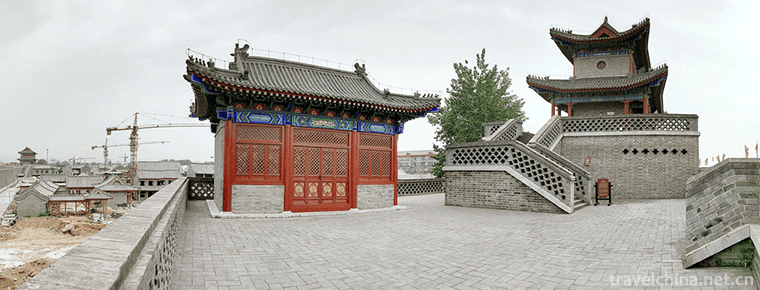
-
Shangrao Lingshan Scenic Area
Shangraolingshan Scenic Area, located in the north of Shangrao County, Shangrao City, Jiangxi Province, is a national scenic spot with an area of 160 square kilometers. Lingshan is listed as the ".
Views: 118 Time 2018-12-19 -
Wangcheng in heaven
Tianwangcheng Scenic Area is located 40 kilometers northwest of Yishui County, Linyi City, Shandong Province. The main part of the Scenic Area is located in Jiwanggu. It is the national AAAA scenic sp.
Views: 102 Time 2019-02-21 -
Firing Techniques of Chaozhou Coloured Porcelain
In Chaozhou at the end of the Qing Dynasty, new colored pigments were used in the colored porcelain painting. Combining traditional glaze painting art with traditional Chinese painting .
Views: 234 Time 2019-04-16 -
Manufacturing Techniques of Tussah Paper
The manufacturing history of tussah paper is as long as that of linen paper. The raw material for making the paper is the phloem fibers of the tree. The bark of the tree contains wood phloem fibers wh.
Views: 182 Time 2019-04-18 -
Traditional Chinese Medicine Culture
Traditional Chinese medicine (TCM) is the oldest and most complete medical system in the world. It is not only a method of treating diseases, but also a complete philosophy of the universe and life..
Views: 136 Time 2019-04-22 -
Kazakh Karakol Leha
On May 23, 2011, Kazakh Karakol Kazakh was listed in the third batch of national intangible cultural heritage list with the approval of the State Council..
Views: 307 Time 2019-05-02 -
Lanxi stall spring
Lanxi Spring Spring Spring Spring is an ancient form of sitting and singing art, which was formed and popular in Lanxi area in the Midwest of Zhejiang Province, Jinhua and Quzhou, and belongs to Nanci.
Views: 150 Time 2019-05-10 -
Pingyao Pushing Lacquerware Decoration Techniques
Pingyao polishing lacquerware decoration technology originated in Pingyao County, central Shanxi Province, and spread to the vast northern region. Lacquerware made with this technique has been well kn.
Views: 142 Time 2019-06-09 -
Bone setting therapy of traditional Chinese medicine
Bone-setting, traditional Chinese medicine refers to the treatment of fracture, dislocation and other diseases by pushing, pulling, pressing and pressing. Orthopaedics, as a specialty name, is a speci.
Views: 293 Time 2019-08-10 -
Deng Xiaoping
Deng Xiaoping (August 22, 1904 -1997 February 19th), formerly known as Deng Xiansheng, the scientific name of Deng Xixian, Guang'an, Sichuan. Go to Europe early Work study program After his return, he.
Views: 330 Time 2019-09-07 -
Deyang first industry
In 2018, the sown area of crops in Deyang City was 477000 hectares, 533 hectares less than the previous year, a decrease of 0.1%. Among them, the sown area of grain crops was 311000 ha, decreased by 1525 ha, decreased by 0.5%; the sown area of oil .
Views: 125 Time 2020-12-14
